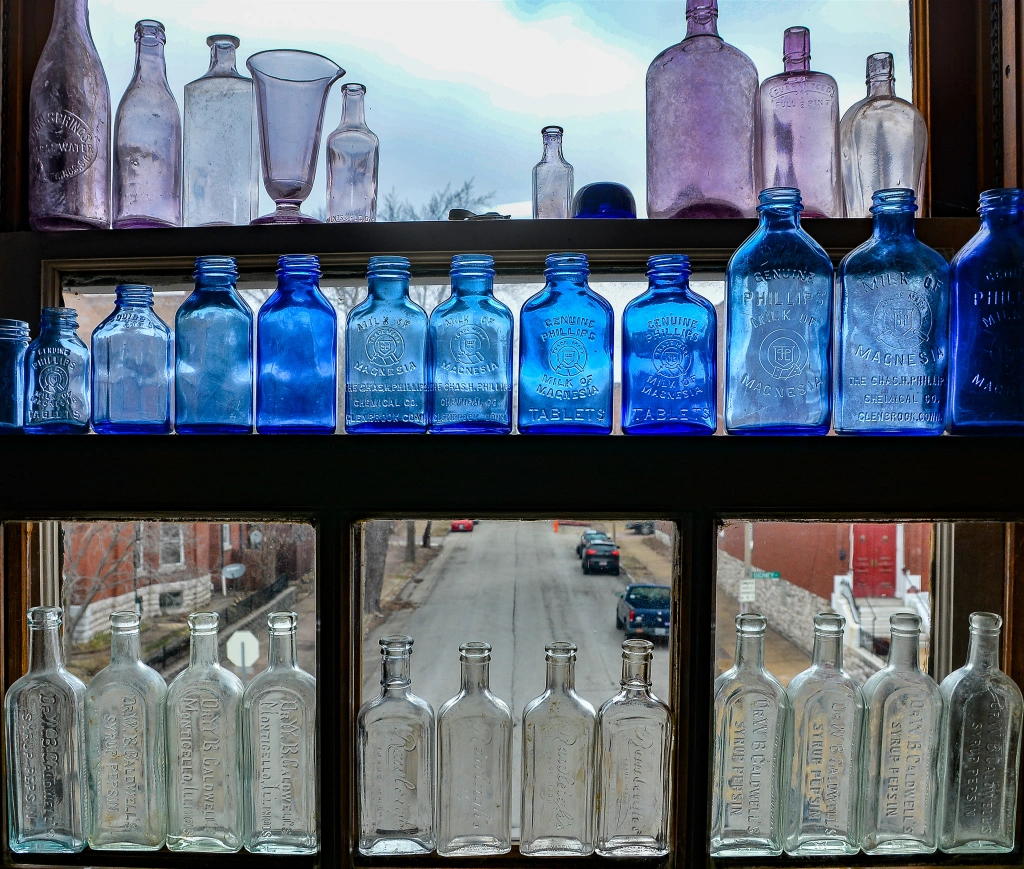In this month’s guest blog, Benjamin Moore, author of The Names of John Gergen: Immigrant Identities in Early Twentieth-Century St. Louis discusses the importance and meaning of found objects. Moore is Professor Emeritus at Fontbonne University in St. Louis, Missouri. In 2006 he co-founded the Bosnia Memory Project, dedicated to preserving the memory of St. Louis’s Bosnians by recording oral histories and collecting personal letters and artifacts. In 2020, the Bosnia Memory Project became the Center for Bosnian Studies, where Ben now serves as Senior Researcher.
The best documentation of our lives is the detritus that we leave behind.
I’ve been collecting discarded objects for half a century and privately rearranging them for forty years. Thousands of them are now assembled in what I call the box room: a second-floor study with windows and high ceilings, where makeshift shelves and wooden boxes hold the remnants of other people’s lives. The older I grow, the more resonant the objects become, and the more they accumulate, the more commonality I feel with the countless people they represent.
When I wrote The Names of John Gergen, I was moved by the knowledge that young John never meant for me to read his World War-I era schoolwork, which I stumbled on in an alley in 2004. He never meant for me to discover his bilingualism, his perseverance, his learning disabilities, his family, his community, or his vexed and complicated life, which came to a tragic end at age 26 in 1935. Over the fifteen years that I researched John and his world, I came to realize that the schoolwork, fraught with errors, was much like John himself—“labored in the rendering, flawed in the result, and ultimately forgotten” (The Names of John Gergen, 158).
So it is with the other objects that I’ve pulled from dumpsters, alleys, and the shelves of second-hand shops. They speak to the ways that lives play out and break down, becoming anonymous and obsolete: wooden shipping crates, drawers from tossed furniture, rusted machine parts, galvanized steel wash basins, old bottles, worn shovels, wooden spindles, brass keys, ceramic doorknobs, a weathered plaster angel whose first purpose is now unknown.
Some of the items are researchable, like the antique liquor bottle found in the same dumpster as John’s schoolwork. “Ginger Cordial,” reads the faded label; “bottled and guaranteed by J. Simon and Sons, St. Louis, Mo.” Jacob Simon migrated from Germany in 1858. He lived first in Kentucky, where he fathered five children, but by 1900 he resided in St. Louis, working with his sons as a liquor distributor. Jacob died in 1910 at the age of sixty-seven, but his sons kept the business going, even during Prohibition. By 1922, they had turned to selling “strictly pure altar wines, dry and sweet” (Catholic Fortnightly Review). Meanwhile, 222 cases of the Simons’ wines, bitters, cordials, and brandies lay in storage in a warehouse in south St. Louis. On August 31, 1929, federal agents opened the warehouse and poured into the sewer “some of the choicest products of Spain, France, Italy, Portugal, and the Rhineland” (St. Louis Post-Dispatch).
Or take the whetstone that I bought at a yard sale near my house, carefully encased in a length of two-by-four that was sawn down the middle and chiseled out, a custom box that fits the stone snugly. On the top of the box is engraved the name “W Huxel.” William Walter Huxel was born in St. Louis in 1888 and died in southern Illinois in 1966. He was an electrician who took care of his tools. The whetstone, which still smells of machine oil, bears a gentle depression worn in over the years as Huxel honed his blades.
But most objects that I find are untethered from their past, mute remnants of lives whose outlines are long lost. They offer no clues about who held and relinquished them, silently suggesting that people are the true ephemera. Artifacts evoke absence. And many writings about the past—including The Names of John Gergen—seek to fill the void that is left when life and memory end.
We leave behind pieces of ourselves as we go along our way. Most of the pieces will be lost, but some will be recovered by others, and then history will do with us what it will. For most of us, that will mean oblivion, but we will never know for sure. As I write in the book, “John is therefore what all of us have the potential to be. None of us can be certain that we will be remembered—or, for that matter, that we will be forgotten” (282).
To take a guided tour of Ben’s Box Room, check out this video produced by Lyla Turner.
Many thanks to Lyla Turner for allowing us to share this wonderful video and for supplying the pictures for the post.
The Names of John Gergen: Immigrant Identities in Early Twentieth-Century St. Louis by Benjamin Moore
H: 9780826222275 | $50.00 | 362 pp. | 40 illus.
Benjamin Moore is Professor Emeritus at Fontbonne University and is the founder and former director of the Center for Bosnian Studies.






